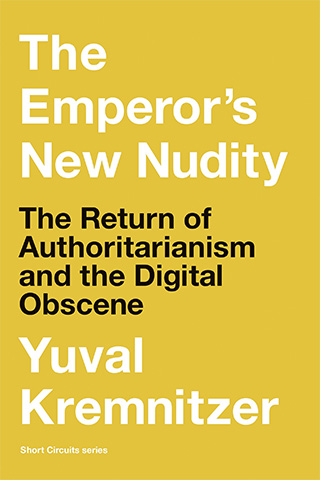Totalitarianism Without Totality: On the Cynical Core of the New Right

The phrase “father knows best” encapsulates and simplifies an old, fading, and highly discredited notion of paternal authority: Father — or any other authority figure unfortunate enough to assume this place of privilege — is privy to a knowledge that makes him fit to rule. Of course, by now most of us see this position as fake, and father figures as imposters. Indeed, the Enlightenment sought precisely to relieve us from the unthinking reliance on figures of authority, to dare to think for ourselves, as Kant famously put it. This was the core of the Enlightenment’s emancipatory promise: Think for yourself, authorize yourself to think, and external authority just might wither away.

How are we to understand, then, the steady slide of liberal democracies, grounded in the promise of enlightenment, into what can be called the rule of the worst (a kakistocracy)? Two and a half decades into the 21st century, we’re witnessing all around us the rise of authority figures and political parties that seem to garner more legitimacy the more they demonstrate just how unfit to rule they are. Reasonable as we are, we pull our hair in despair.
But are they truly the worst? Can we not easily imagine, right around the corner, something even worse? Behind the vain vengefulness of Trump, promising to act as a dictator against his political enemies, doesn’t there lie something worse still, the crystallizing ideology, say, of Christian nationalism? Is what we are witnessing a step in the direction of something familiar to us from the 20th century, namely full-blown fascism and totalitarianism? Or is this comparison itself a dangerous distraction? After all, specters of past historical events could lead us away from coming to terms with how deeply boring and disappointing our postmodern dystopia truly is, denying us even the apocalyptic, final dramatic clash between good and evil.
Is what we are witnessing a step in the direction of something familiar to us from the 20th century, namely full-blown fascism and totalitarianism, or is this comparison itself a dangerous distraction?
It’s even quite likely that the fear of the return of fascism has been helping right-wing forces solidify their power. The easily identifiable differences between the emergent right-wing regimes and 20th-century fascism enable the right wing to dismiss the alarms sounded by the left and center as baseless panic or propaganda. David Runciman, in his book “How Democracy Ends,” argues that the central image used to talk about the death of democracy, that of the coup d’état, is rooted in the past and is ill-suited to illustrate what he calls liberal democracy’s “midlife crisis.” This ill-suitability, in turn, prevents us from seeing what is taking shape before our very eyes. It’s bad, but it could be worse, we tell ourselves.
The defenders of the liberal order, by focusing on familiar dangers from the past, tend to view the new right as a transitional phase that echoes older authoritarian movements. But in doing so, they overlook one of the new right’s most striking and significant features: its lack of a coherent political program. Unlike its predecessors, the new right is defined by its nihilism, transgressiveness, and thorough cynicism.
While these traits bring it close to the far-right movements of the 20th century, its distinction lies in the very similarity of the present to the condition described by the German philosopher Hannah Arendt as pre-totalitarian. This naturally leads to the fear and expectation that our present is merely a transition, a passing moment on the way to something worse, familiar to us from the past. And yet, while something like full-blown totalitarianism might crystalize at some point, we must be able to recognize a different possibility, that our present is constituted by a strange, quasi-stabilized pre-totalitarian or semi-totalitarian reality, or what I label here a totalitarianism without totality.
As Arendt describes in “The Origins of Totalitarianism,” the “masses” whom totalitarians funneled into a movement were made ready for such mobilization by a “desire to see the ruin of this whole world of fake security, fake culture and fake life. . . . Unlike the nihilism of Nietzsche and other radicalisms (Sorel, Bakunin) for them it was about destruction for its own sake: destruction without mitigation, chaos and ruin as such assumed the dignity of supreme values.”
Reading Arendt today is a chilling experience. Much of what we are witnessing is an even more accentuated version of the conditions she described as pre-totalitarian: extreme atomization, existential loneliness (feeling oneself wordless and superfluous), and destructive nihilism, namely, the desire to see it all burn down. Arendt is not alone in connecting such a cultural mood to the rise of the extreme right. In his 1967 lecture on the new right, Theodore Adorno pointed to the appeal of an apocalyptic vision for societies in which a better future seems out of the question.
And indeed, as Arendt closes her book, she notes that we should expect the new form of government she labels totalitarianism, like the old ones, to remain with us. The logical space in which Arendt situated totalitarianism is unquestionably the very same space with which the new right is flirting. For Arendt, totalitarianism was neither tyranny — “the rule of one against all” — nor democracy, the rule of the many (which could also be called “the all against one”), but a strange mixture of both.
Totalitarianism, as Arendt describes, transcended traditional distinctions between lawful and lawless rule, claiming instead to embody a higher, suprahuman “truth” derived from History or Nature, to which all else was subordinated. This “truth” is performative: It’s not about factuality in the traditional sense, but about an eventual truth that is defined by the ideology’s ultimate goals.
To cite an example used by Arendt, the claim made by the Soviet regime in the 1930s that only Moscow has an underground train — on its face, patently absurd and easily disproved — is true from the perspective of the fulfilled History, in which Moscow has conquered, defeated, and destroyed all the infrastructure of its enemies. Call it an eventual truth. This ideology transforms unwritten law into an object of special, higher knowledge — a terrain of truth above mundane factuality. By anchoring legitimacy in a metaphysical future, totalitarian movements charge their followers with bringing it about. Knowing what is to come, we are charged with the task of bringing it about. By contrast, today’s authoritarian figures seem brazenly and shamelessly self-interested, indulging in hedonistic pleasures. Their capacity to transgress the unwritten rules that apply to other politicians (and ordinary citizens) is one of their most striking features.
Might Is Right: Liberal Hypocrisies and Their Inverted Response from the Real
What we are witnessing today seems to be a very different kind of mixture of lawfulness and lawlessness from the one analyzed by Arendt. Now it is not so much the proclaimed access to a more fundamental, supreme, unwritten law that organizes the rationale of the new right, or its “truth value.” These seem to lie, instead, in an act of exposure, a rationale that is so strikingly obvious it is hard to come to terms with. Here we come into closest proximity to the 20th-century iteration of authoritarianism, but without the ideological framework, without the vision of a fulfilled, salvaged history.
As Arendt makes clear, the desire for destruction and sacrifice which was prevalent amongst the elites in the years leading to the rise of totalitarian movements in the 20th century is not to be dismissed as “nihilism,” for that would be to overlook “how justified disgust can be in a society wholly permeated with the ideological outlook and moral standards of the bourgeoisie.” In a significant sense, totalitarianism presented itself as the “answer from the real” to the duplicitous decay of the bourgeoisie’s political philosophy, returning to the bourgeoisie their own message in inverted form:
The totalitarian movements asserted their “superiority” in that they carried a Weltanschauung [a worldview] by which they would take possession of man as a whole. In this claim to totality the mob leaders of the movements again formulated and only reversed the bourgeoisie’s own political philosophy. . . . [They] always believed that the public and visible organs of power were directed by their own secret, non-public interests and influence. In this sense the bourgeoisie’s political philosophy was always “totalitarian”; it always assumed an identity of politics, economics, and society, in which political institutions served only as the façade for private interests. The bourgeoisie’s double standard, its differentiation between public and private life, were a concession to the nation-state which had desperately tried to keep the two spheres apart.
What Arendt is suggesting here is quite startling: The cynicism deeply ingrained in liberal political philosophy, in which the public order is grounded in self-interest, has led to a public sphere that mainly serves private gains rather than the common good. Modern, bourgeois societies are characterized, as will become a major topic in her “Human Condition,” by the loss of a political, significant distinction between the public and the private, a loss that creates conditions where totalitarianism can take hold.
If capitalism promises that nothing is impossible for us individually, totalitarianism returns the very same message on the terrains of the social whole.
The collapse of the distinction between the public and the private that is often associated with totalitarianism is understood by Arendt not as the reversal of an individualistic, liberal society, but as making explicit what had already been latent in the liberal construction of public space. If capitalism promises that nothing is impossible for us individually, totalitarianism returns the very same message on the terrains of the social whole. If the liberal order positions the public good as a mere facade and facilitator of subjective enjoyment, totalitarianism “merely” promises to drop the mask and have enjoyment permeate the entire social sphere.
The new right currently on the rise is certainly using the “perversion of the bourgeoisie,” only not so much by offering a “unified” man, for whom, say, the public and private spheres should coalesce, but by virtue of a direct appeal and maximal utilization of the very “superiority” imbued in revealing the dark truth of power and self-interest, which is why lines like the following, written by Arendt to describe the supporters of totalitarianism in the 20th century, have such a contemporary ring to them: “They were satisfied with blind partisanship in anything that respectable society had banned, regardless of theory or content, and they elevated cruelty to a major virtue because it contradicted society’s humanitarian and liberal hypocrisy.”
The appeal of 20th-century populist authoritarianism, just like that of today, was intimately linked with the impotent rage unleashed by a politics that fosters and crushes hopes for individuals to “realize” their potential through upward social mobility. Until this cycle is broken, the allure of authoritarianism will continue to thrive on the promise of an escape from the crushing weight of unfulfilled aspirations.
Yuval Kremnitzer is a philosopher, literary scholar, and media critic. He is the author of “The Emperor’s New Nudity,” from which this article is adapted.



